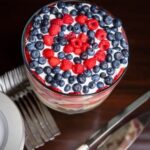Are you looking to learn how to decorate cake with cream? Cake decoration is an essential aspect of baking that adds not only visual appeal but also a delightful finishing touch to your confectionery creations.
The use of cream for decorating cakes opens up a world of creative possibilities, allowing you to personalize and enhance the appearance of your baked goods. From simple designs to intricate patterns, the art of cake decoration with cream can elevate the overall presentation of your cakes, making them visually enticing and mouth-watering.
To successfully decorate a cake with cream, it is important to have the right tools and materials at your disposal. From piping bags and tips to offset spatulas, each tool plays a crucial role in achieving the desired decorative effects on your cake.
Additionally, starting with a well-baked and cooled cake is essential before undertaking any decoration process to ensure optimal results. In this article, we will explore the step-by-step process of using homemade cream for cake decoration, along with techniques, tips for success, and creative ideas for stunning cream decorations.
Whether you’re a seasoned baker or a novice in the kitchen, mastering the art of cake decoration with cream can take your baking skills to new heights. By learning different techniques and practicing creativity, you can transform ordinary cakes into extraordinary works of edible art that are sure to impress friends, family, and guests alike.
So let’s delve into the world of cake decoration with cream and discover how this versatile ingredient can be used to adorn cakes with style and flair.
Tools and Materials Needed
When it comes to decorating a cake with cream, having the right tools and materials is essential for achieving professional results. Here is a list of the essential items needed for decorating a cake with cream:
Piping Bags and Tips
Piping bags are an indispensable tool for cake decoration, as they allow you to neatly apply the cream onto the cake in various designs. Additionally, different tips can be attached to piping bags to create different shapes and textures with the cream.
Offset Spatula
An offset spatula is useful for spreading and smoothing the cream onto the cake, ensuring an even and polished finish. It can also be used to create decorative patterns or textures on the surface of the cream.
Cake Turntable
A cake turntable is beneficial for easily rotating the cake while decorating, allowing for smoother and more consistent application of the cream.
Bench Scraper
A bench scraper is useful for creating clean edges and sides on a frosted cake, giving it a polished appearance. It can also be used to smooth out any imperfections in the cream.
In addition to these tools, other materials such as parchment paper, stencils, templates, and food coloring may also be helpful depending on your desired design.
Having these tools and materials on hand will ensure that you have everything you need to successfully decorate a cake with cream.
Preparing the Cake
Before diving into the creative and visually appealing task of cake decoration with cream, it is crucial to emphasize the significance of starting with a well-baked and cooled cake. The foundation of any beautifully decorated cake lies in the quality and condition of the cake itself. A moist, evenly baked cake that has been allowed to cool properly provides the ideal canvas for smooth and successful cream decoration.
First and foremost, ensuring that the cake is baked to perfection is essential. This involves following a reliable recipe, accurately measuring ingredients, and paying close attention to baking times and temperatures. The use of quality ingredients also plays a critical role in producing a delicious and structurally sound cake that is suitable for decorating with cream.
Once the cake has been baked to golden perfection, it must be allowed to cool completely before any cream decoration begins. Attempting to decorate a warm or even slightly warm cake can lead to disastrous results, as the cream will melt or become runny on contact with warmth.
Additionally, trying to apply cream on a warm cake can cause crumbs to mix into the frosting, resulting in an unsightly appearance. Therefore, patience is key when it comes to allowing the cake adequate time to cool before initiating the decoration process.
| Importance of Preparing Cake | Key Considerations |
|---|---|
| Quality Foundation | Well-baked and cooled cakes provide better canvas for cream decorations |
| Baking & Cooling Process | Attention to accurate baking time/temperature; importance of complete cooling |
How to Make Cream
The process of making homemade cream for cake decoration is relatively simple and can elevate the overall appearance and taste of the cake. To make whipped cream, you will need heavy cream, powdered sugar, and vanilla extract. The heavy cream should ideally have a fat content of at least 36% to ensure that it can hold its shape when whipped. In terms of equipment, a metal or glass bowl and electric mixer are essential for achieving the desired consistency.
To begin, chill the metal or glass bowl in the refrigerator for at least 15 minutes before starting. This will help maintain the cold temperature necessary for whipping the cream effectively. Once the bowl is chilled, pour the heavy cream into it and start whisking at a low speed. Gradually increase the speed as the cream thickens, taking care not to over-whip it, as this can result in curdling.
As the cream begins to thicken, add powdered sugar and vanilla extract to sweeten and flavor it. Continue whisking until stiff peaks form; this indicates that the whipped cream has reached its ideal consistency for cake decoration. It’s important to note that over-whipped cream can turn into butter, so be mindful of the timing during this step.
| Ingredients | Process |
|---|---|
| Heavy Cream | Pour into chilled bowl |
| Powdered Sugar | Add gradually as you continue whisking |
| Vanilla Extract | Add for flavoring while continuing to whip until stiff peaks form |
Techniques for Decorating With Cream
When it comes to decorating a cake with cream, there are several different techniques that can be used to achieve beautiful and professional-looking results. Whether you’re a beginner or an experienced baker, knowing the various methods for applying cream to a cake can help you create stunning designs and decorations. Here are some popular techniques for decorating with cream:
1. Piping: Piping is perhaps the most common and versatile technique for decorating cakes with cream. By using a piping bag and different tips, you can create intricate designs, borders, flowers, and other decorative elements on the surface of the cake. From simple swirls to complex floral patterns, the possibilities for piping with cream are endless.
2. Spreading: Spreading cream over the surface of a cake may seem straightforward, but it requires some skill and finesse to achieve a smooth and even finish. An offset spatula is often used to spread cream in thin layers across the cake’s top and sides, creating a clean canvas for further decoration. This technique is great for achieving a sleek and modern look.
3. Using Stencils or Templates: For those who want to add more intricate designs to their cakes, stencils or templates can be used as guides for applying cream in specific patterns or shapes. Simply lay the stencil on top of the cake and carefully spread or pipe cream over it to transfer the design onto the cake’s surface. This technique is perfect for adding detailed accents and embellishments to your creations.
Experimenting with these different techniques can help you find your own unique style when it comes to decorating cakes with cream. Whether you prefer classic piping patterns, smooth and elegant spreads, or intricately stenciled designs, there’s no limit to what you can achieve with some practice and creativity.
Tips for Success
Decorating a cake with cream can be both fun and challenging. To achieve professional-looking cake decorations with cream, it’s essential to keep a few tips and tricks in mind. Here are some helpful suggestions for success:
- Use chilled equipment: Before starting the decoration process, chill your mixing bowl, beaters, and cream in the refrigerator for at least 15 minutes. This will help the cream whip up faster and hold its shape better.
- Choose the right cream: Not all creams are created equal when it comes to decorating cakes. Heavy cream or whipping cream with a high fat content is ideal for stable and sturdy decorations.
- Avoid over-whipping: Over-whipped cream can quickly turn into butter, so be sure to stop beating as soon as stiff peaks form. If you accidentally over-whip the cream, gently fold in additional unwhipped cream to bring it back to the desired consistency.
Additionally, troubleshooting common issues that may arise during the cake decoration process is crucial for achieving professional results. Here are some common problems and their solutions:
- Runny cream: If your whipped cream is too runny, try placing it in the refrigerator for a few minutes to firm up before continuing with the decoration process.
- Weeping or separation: If your whipped cream starts to weep or separate after decorating the cake, it may be due to over-beating or using a low-fat cream. To prevent this issue, stabilize the whipped cream by adding a small amount of gelatin or confectioners’ sugar while whipping.
- Melting in warm conditions: If you’re decorating a cake that will be displayed in warm conditions, consider using stabilized whipped cream or adding a bit of cornstarch while whipping to help the decorations hold their shape longer.
By following these tips and being prepared to troubleshoot any issues that may arise, you can create beautiful and professional-looking cake decorations using cream.
Creative Ideas for Cream Decorations
When it comes to decorating cakes with cream, the possibilities are endless. One of the most popular and creative ways to use cream for cake decoration is by creating floral designs. Using a piping bag and different decorating tips, you can create beautiful buttercream flowers such as roses, daisies, and tulips. These floral designs not only add a vibrant and elegant touch to the cake but also show off your artistic skills.
In addition to floral designs, using cream to create borders on cakes is another creative way to decorate. Whether it’s a simple shell border or a more intricate lace design, adding borders with cream can instantly elevate the look of a cake. Borders can be created using various piping tips and techniques, offering endless options for customization based on the theme or occasion of the cake.
Beyond floral designs and borders, incorporating textural elements into cream decorations can add visual interest and depth to a cake. For example, using an offset spatula to create textured swirls or waves in the cream can give the cake a rustic or modern look, depending on your desired outcome. Textural elements can also be achieved by combining different shades of cream or utilizing edible glitter or luster dust for added sparkle.
Ultimately, when it comes to using cream to decorate cakes, the key is to let your creativity run wild. Experimenting with different techniques and designs will not only result in stunning cakes but also showcase your unique style as a baker/decorator. Whether it’s through floral designs, borders, or textural elements, using cream for cake decoration provides endless opportunities for creativity and innovation that are sure to impress any audience.
Decorating cakes with cream opens up an array of possibilities for expression and artistry in baking. By exploring different techniques such as floral designs, borders, and textural elements, bakers can enhance the visual appeal of their creations while showcasing their creativity. With practice and experimentation with various methods of cream decoration, anyone can master the art of turning a simple cake into an edible work of art.
Finishing Touches
In conclusion, mastering the art of decorating cakes with cream can take your baking skills to the next level. The final touches are what truly elevate a cake from simple to stunning, and adding fresh fruit, sprinkles, or edible flowers can make all the difference.
Whether you’re creating a birthday cake, wedding cake, or simply a special treat for yourself and your loved ones, paying attention to these finishing touches will ensure your creation is not only delicious but visually impressive as well.
By carefully selecting and strategically placing additional decorations, you can tie in the overall theme or flavor of the cake with complementary colors and textures. For example, adding fresh berries on top of a cream-decorated cake not only adds a pop of color but also provides a burst of freshness that pairs perfectly with the rich cream. Similarly, sprinkles or edible flowers can add whimsy and elegance to any design, elevating the visual appeal of the cake.
Remember that the finishing touches should enhance the overall look of the cake without overwhelming it. It’s about striking a balance between simplicity and sophistication, allowing the cream decorations to shine while complementing them with just the right amount of additional adornments. With practice and creativity, you can take your cream-decorated cakes to new heights and impress everyone with your impeccable baking skills.

Welcome to my blog about home and family. This blog is a place where I will share my thoughts, ideas, and experiences related to these important topics. I am a stay-at-home mom with two young children. I hope you enjoy reading it! and may find some helpful tips and ideas that will make your home and family life even better!





